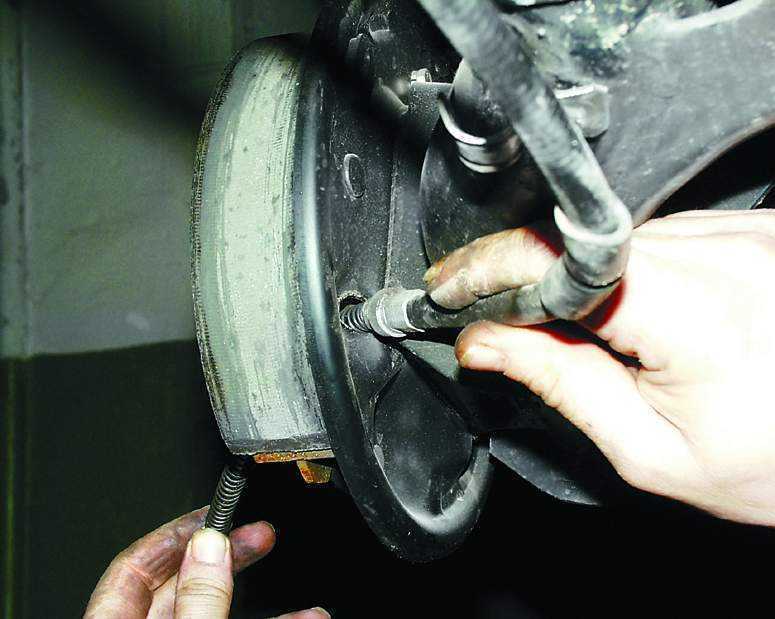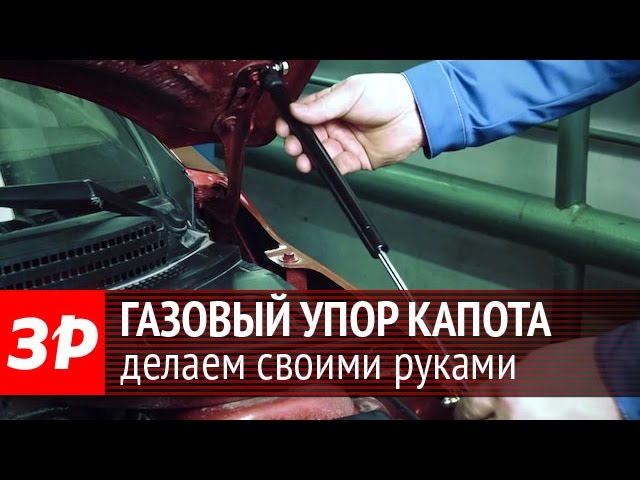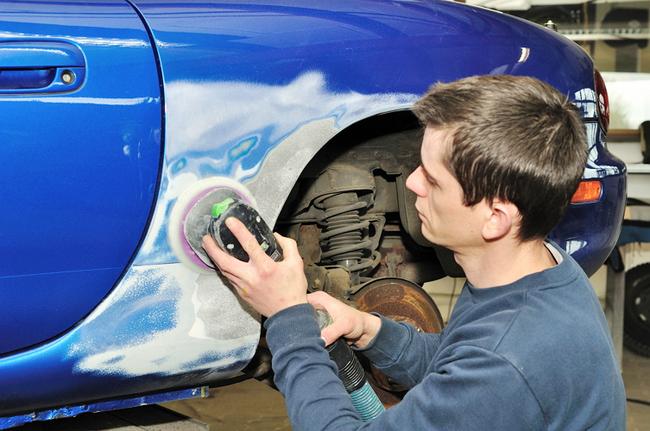
How to replace the parking brake cable
The parking brake cable assembly may be made up of several different pieces that extend through or under the vehicle. The parking brake cable is designed to connect between the parking brake control unit and the mechanical parking brake assemblies.
When the vehicle's mechanical parking brake is applied, the parking brake cable is strongly pulled to transfer mechanical force from the control assembly to the mechanical brake assembly.
The parking brake system is installed on every vehicle as an auxiliary brake system, the main task of which is to keep the vehicle stationary when not in use. When parking the vehicle and leaving it unattended, it is recommended to apply the parking brake to keep the vehicle stationary. This works best when parking on hills or slopes where you really want the car to stay put and not slide down the hill while you are away.
Part 1 of 2. How the parking brake cable works
A cable assembly may require service for many reasons, the most common problem being a cable jam. Intermittent use may cause small rust spots to break down or some moisture to escape. When the parking brake is not used very often, the cable does not pass through its insulation.
If the parking brake is never used, rust can form inside the insulation and lock the cable in place. Then, when you try to apply the parking brake, you feel tension on the control, but there is no holding force on the brakes. The system can fail and vice versa when you apply the brake and it holds but cannot release when the cable gets stuck in the insulation and can make the car almost uncontrollable. A car's engine will always overpower the brakes, but driving a car with a stuck parking brake will seriously damage the brakes.
- Functions: Have a qualified technician inspect your vehicle before proceeding with the repair, as some vehicles are equipped with multiple cables connected together along the entire length of the vehicle. Once the repair technician indicates which cable needs to be replaced, you can follow the steps in your vehicle service manual to complete the repair.
Some common parking brake problems are:
- The control application is too light, the brake does not hold
- The control application is very complex
- Parking brake does not hold when applied
- The parking brake only holds one wheel where it should hold two.
- Noise coming from the vehicle from the area where the parking brake mechanism is installed
- The parking brake holds on a flat surface, but not on a slope
While infrequent use of the mechanical parking brake may cause a malfunction; Using the parking brake on a regular basis requires special care. Even if you are a user who religiously applies the parking brake before exiting the vehicle, this is a mechanical system and mechanical systems require some maintenance from time to time.
The parking brake cable is responsible for maintaining a lot of tension. The system was designed to hold this type of force, but due to use, the cable begins to stretch over time and needs to be adjusted to keep it tight again.
Part 2 of 2: Parking Brake Cable Replacement
There are several different designs of brake assemblies depending on the type of assembly in your vehicle. The repair procedure may vary depending on the type. See your vehicle's service manual for details.
Necessary materials
- Brake Service Tensioner Kit
- Brake Service Tool Set
- Drum brake maintenance tool kit
- Jack
- Gloves
- Jack stands
- Wrench
- Mechanics tool kit
- Parking brake cable removal tool
- Pliers
- Respirator mask
- Safety glasses
- Wrench
- Vehicle Service Manual
- Wheel chocks
Step 1: Park and secure your vehicle. Before carrying out any work, park the vehicle on a level surface. Use wedges to prevent any unwanted wheel movement.
Step 2: Find the brake cable. Determine the location of the control side of the brake cable. The connection may be inside the vehicle, under it, or to the side of the vehicle.
Raise the vehicle appropriately and support the weight of the vehicle with jacks.
A warning: Never drive under a vehicle supported only by a jack.
Attention: Some vehicles require all four wheels to be up for this service.
Step 3: Release the parking brake. If you applied the parking brake before lifting the vehicle, you can release the lever once the weight is supported.
The vehicle will have an adjustment mechanism and this device must be adjusted to allow as much slack in the cable as possible. A loosely adjusted cable will be easier to remove.
Step 4: Remove the control side parking cable. Disconnect the cable from the control side and along the length of the cable, find guides or brackets that can attach the cable to the car body. Remove all supporting fasteners.
Step 5: Disengage the parking brake. On the brake side of the parking brake, disassemble and disconnect the parking brake cable from the mechanical brake assembly following the instructions in your vehicle service manual.
Step 6: Make sure the new cable matches the old one. Remove the old cable from the car and lay it next to the new one to make sure the part is correct and the fasteners match.
- Functions: Apply silicone grease or anti-rust spray to the new cable. This will increase the life expectancy of the new cable and prevent further moisture damage. Grease can also be used to coat the cable. The idea is to add extra lubricant to the new cable.
Step 7: Install the New Parking Brake Cable. Reverse the removal process or follow the service manual to properly install the new parking brake cable assembly.
Step 8: Reinstall the wheel. The work will not be completed without the correct installation of the wheel back on the vehicle. Install the wheel assembly on the wheel hub.
Tighten the fasteners by hand or use a set of sockets for this.
Step 9: Lower the car and complete the process.. Lower the car until the tire starts to touch the ground. Take a torque wrench and tighten the wheel nuts or bolts to the correct torque. Secure each wheel in this way.
Any deviation from this tire and wheel fitting process can cause the wheel to loosen.
- FunctionsA: If you come to a wheel that hasn't been removed, still take the time to check the torque.
After work is complete, test the brake to see how it feels and how well it holds the vehicle. If you have a steep driveway or slope, you may need to adjust the parking brake a little more. If the parking brake is applied too tightly, a slight friction may occur during normal driving. Friction causes heat that destroys the parking brake.
If you are not comfortable doing this repair yourself, have an AvtoTachki certified technician replace the parking brake cable and parking brake shoe if needed.

